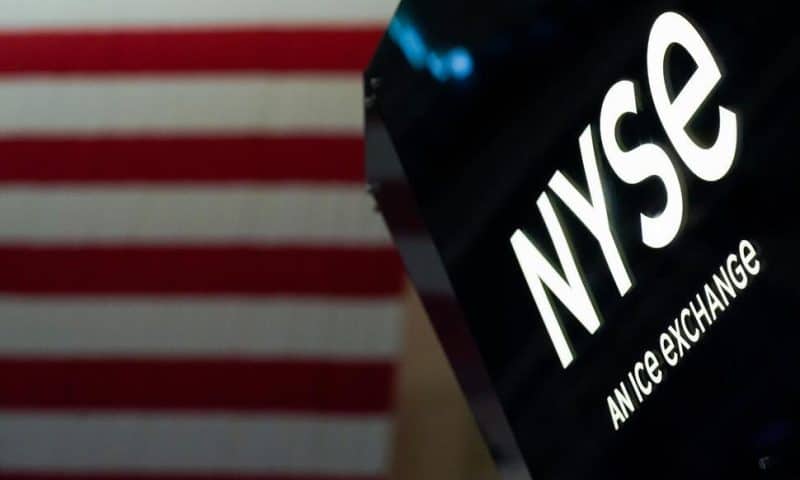Stocks ended mixed after an uneven day of trading and bond yields fell broadly after the government reported that a measure of inflation that’s closely watched by the Federal Reserve eased in October
A day of wobbly trading on Wall Street ended Thursday with a mixed finish for stocks and bond yields broadly lower after the government reported that a measure of inflation that’s closely watched by the Federal Reserve eased in October.
The muted action came as traders looked ahead to a closely watched monthly report on the job market due out Friday that will show how the labor market is holding up and how that may influence what the Fed does next in its bid to cool inflation.
The S&P 500 closed 0.1% lower after drifting modestly higher and lower for much of the day. The Dow Jones Industrial Average fell 0.6% and the Nasdaq composite edged up 0.1%.
Banks and household goods providers were among the biggest drags on the benchmark S&P 500. Bank of America fell 2.9% and Costco slid 6.6%.
Gains in health care companies, communications services stocks and elsewhere in the market helped keep the losses in check. Drugmaker Pfizer rose 1.9% and Netflix climbed 3.7%.
Salesforce slumped 8.3% for the biggest drop in the S&P 500 after Bret Taylor said he would resign as co-CEO of the customer-management software developer.
Yields on both short-term and long-term bonds fell. The yield on the 10-year Treasury, which influences mortgage rates, edged lower to 3.51% from 3.61% late Wednesday. The yield on the two-year note, which tends to track market expectations of future Fed action, fell to 4.24%. from 4.33% a day earlier.
All told, the S&P 500 dipped 3.54 points to 4,076.57. The Dow dropped 194.76 points to 34,395.01. The Nasdaq rose 14.45 points to 11,482.45.
The Russell 2000 index of small companies also took a step back, falling 4.90 points, or 0.3%, to close at 1,881.68.
Major indexes are coming off of their second straight month of gains. Markets rallied Wednesday after Fed Chair Jerome Powell indicated that the central bank could dial back the pace of its interest rate increases as soon as this month. The Fed has been aggressively raising interest rates in order to tame stubbornly hot inflation.
A measure of inflation that is closely monitored by the Fed eased in October. Wall Street has been closely watching any updates about inflation to get a better sense of whether the Fed will tone down its interest rate increases.
Powell said the central bank could begin moderating its pace of rate hikes at its next meeting in mid-December. The Fed, though, has been very clear about its intent to continue raising interest rates until it is sure that inflation is cooling.
The Fed has raised its benchmark rate six times since March, driving it to a range of 3.75% to 4%, the highest in 15 years. Wall Street expects the benchmark rate to reach a peak range of 5% to 5.25% by the middle of 2023.
A big concern for Wall Street has been whether the Fed can tame rates without sending the economy into a recession as it hits the brakes on growth. Businesses are seeing demand fall for a wide range of goods as inflation squeezes wallets. Analysts generally expect the U.S. to dip into a recession, even if it is mild and short, at some point in 2023.
“What turns mild recessions into deep economic scarring is the buildup of excess, and we don’t have a bubble this time,” said Katie Nixon, chief investment officer for Northern Trust Wealth Management.
Inflation will continue to be the main focus for Wall Street, and “on that score, things seem to be coming off the boil,” she said.
Investors are also getting more data this week on inflation’s impact over the broader economy. Activity in the manufacturing sector contracted in November for the first time since May 2020, according to the Institute for Supply Management. The report also showed that prices are falling.
“All signs point to a deceleration of inflation in everything except wages,” Nixon said. “That is sort of the last man standing.”

